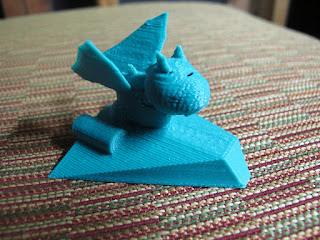I had fun designing & printing up these little spaceships.
I made these at night, & left them outside my kids doors while they slept. They woke up on an otherwise routine school day to discover these new creations awaiting them.
In the process, I learned how to reliably print multiples at one shot. This way, I can kickoff the process, go run errands, & come back to 20 little toys all at once. I then bring them into school when I pickup the kids, to hand out & spread the awareness of this new tool, along with some toys & joy.
One of my daughter's friends (age 5) suggested we have a dragon ride the spaceship. Great idea! So, I built those the next day & handed him one.
My daughter, so happy to see these new toys come to life so fast.































